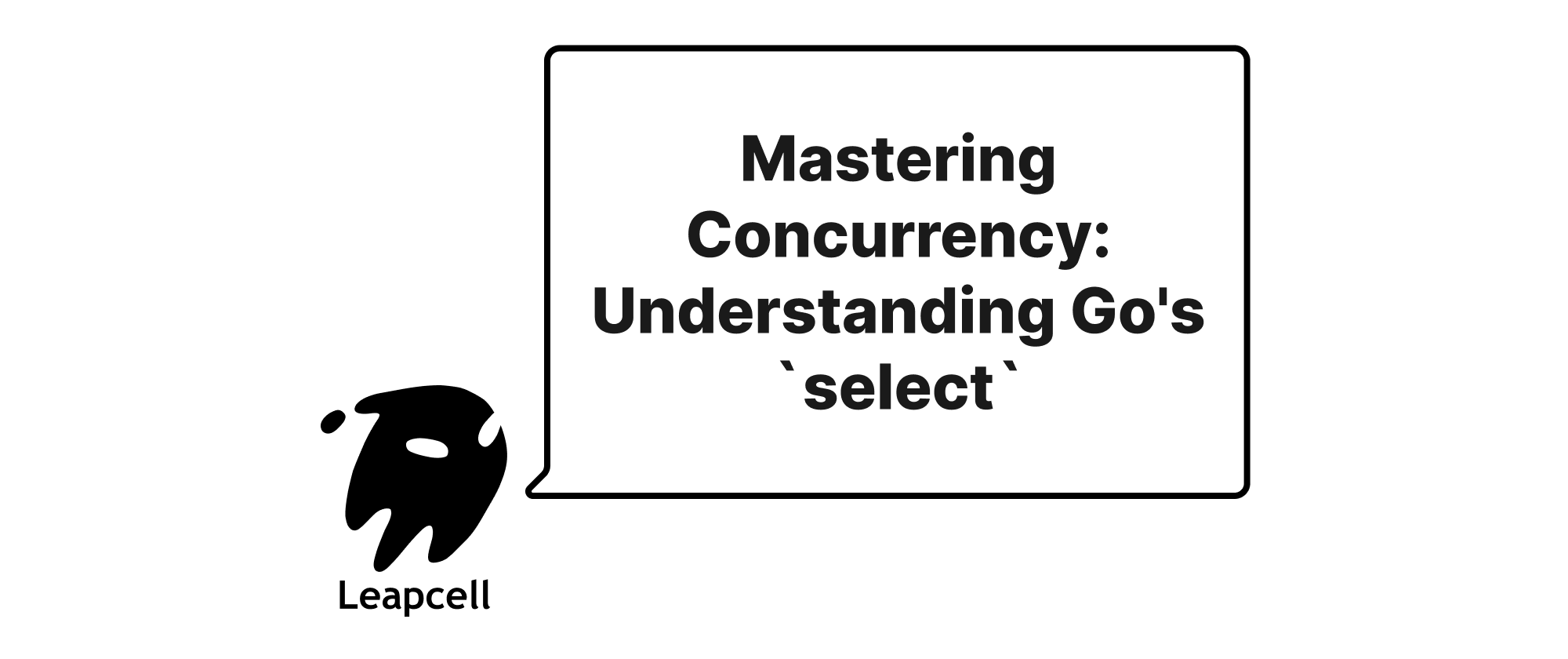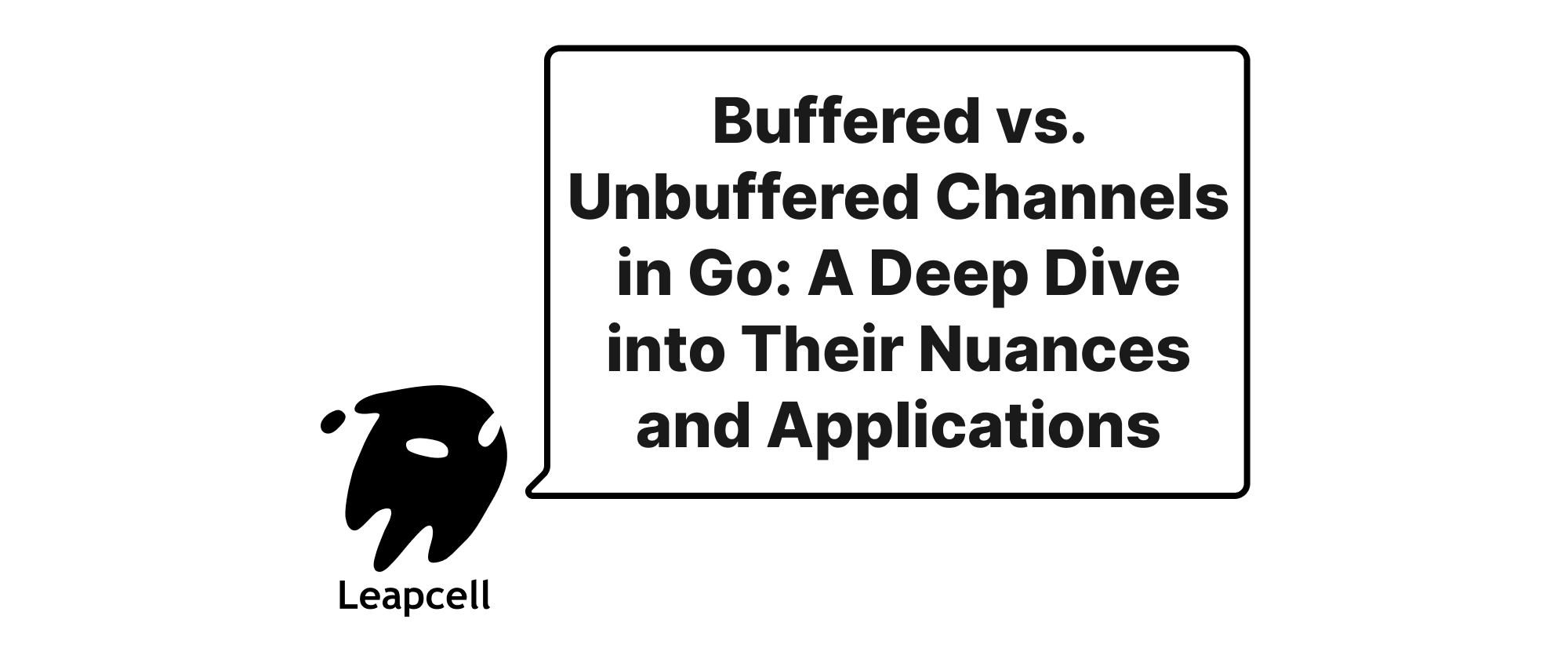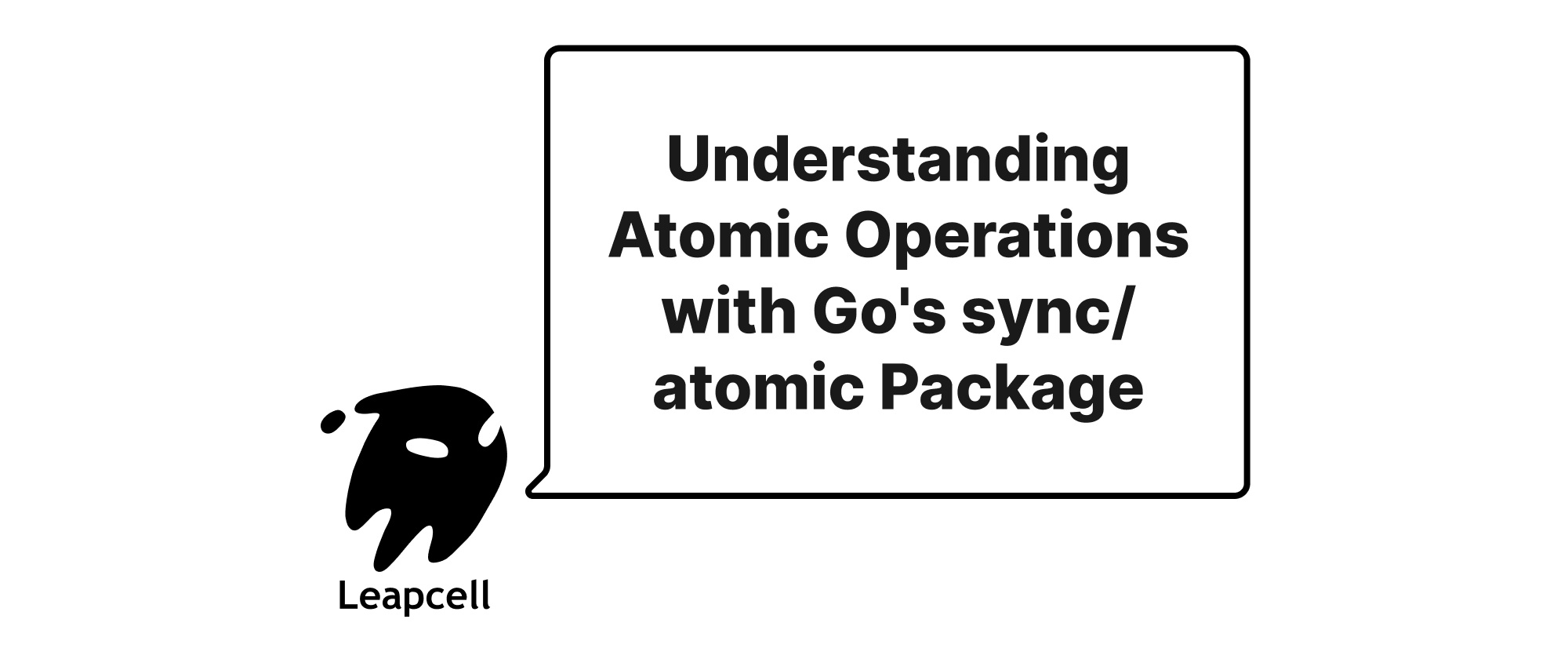Mastering Concurrency: Understanding Go's `select` for Multiplexing and Timeout Handling
Olivia Novak
Dev Intern · Leapcell

In the landscape of concurrent programming, Go's elegant approach to concurrency, primarily through goroutines and channels, has gained significant traction. At the heart of managing and orchestrating these concurrent operations lies the select statement. Often likened to a powerful switch for channels, select is fundamental to implementing effective multiplexing and robust timeout mechanisms in Go applications. This article will thoroughly explore the select statement, demonstrating its capabilities as a multiplexer and a vital tool for handling timeouts, all while providing extensive code examples.
The Essence of select: Multiplexing Channel Communications
At its core, select allows a goroutine to wait on multiple communication operations. It acts as a non-blocking way to check if any of a set of send or receive operations on channels are ready. If one or more are ready, select proceeds with one of them (chosen pseudo-randomly if multiple are ready). If none are ready, and there's a default case, it executes the default case immediately. Otherwise, it blocks until one operation becomes ready.
Consider a scenario where a worker needs to listen for tasks from different sources or respond to control signals. Without select, one might be tempted to use multiple goroutines, each managing a single channel, leading to more complex coordination. select simplifies this by providing a single point of coordination.
Basic Multiplexing Example
Let's illustrate select's multiplexing power with a simple example where a worker goroutine listens for messages from two different producers:
package main import ( "fmt" "time" ) func producer(name string, out chan<- string, delay time.Duration) { for i := 0; ; i++ { msg := fmt.Sprintf("%s produced message %d", name, i) time.Sleep(delay) // Simulate work out <- msg } } func main() { commChannel1 := make(chan string) commChannel2 := make(chan string) done := make(chan bool) // Start two producer goroutines go producer("Producer A", commChannel1, 500*time.Millisecond) go producer("Producer B", commChannel2, 700*time.Millisecond) go func() { for { select { case msg1 := <-commChannel1: fmt.Printf("Received from Channel 1: %s\n", msg1) case msg2 := <-commChannel2: fmt.Printf("Received from Channel 2: %s\n", msg2) case <-time.After(3 * time.Second): // A built-in timeout for the select itself fmt.Println("No message received for 3 seconds. Exiting worker.") close(done) // Signal main to exit return } } }() <-done // Wait for the worker to signal completion fmt.Println("Main goroutine exiting.") }
In this example:
producergoroutines send messages to their respective channels at different intervals.- The anonymous goroutine uses
selectto concurrently listen oncommChannel1andcommChannel2. - Whenever a message arrives on either channel, the corresponding
caseblock is executed. This effectively multiplexes the receiving operations from two distinct communication streams into a single listening point.
Without select, handling this would be much more cumbersome, likely involving separate goroutines for each channel and then an external mechanism to combine their results.
Timeout Handling with select
One of the most critical applications of select is implementing timeouts. Concurrent operations, especially those involving external calls or long-running computations, can hang indefinitely. Timeouts are essential for building robust, responsive, and fault-tolerant systems. Go's time.After function, combined with select, provides a highly idiomatic way to achieve this.
time.After(duration) returns a channel that will send a single value after the specified duration. This channel is perfect for use in a select statement.
Example: Timeout for a Long Operation
Let's imagine a task that might take an arbitrary amount of time, and we want to ensure it completes within a specific deadline.
package main import ( "fmt" "time" ) func performLongOperation(resultChan chan<- string) { fmt.Println("Starting long operation...") // Simulate a long-running task that might or might not finish in time sleepDuration := time.Duration(2 + (time.Now().Unix()%2)) * time.Second // Randomly 2 or 3 seconds time.Sleep(sleepDuration) if sleepDuration < 3*time.Second { // Simulate success within boundary resultChan <- "Operation completed successfully!" } else { resultChan <- "Operation took too long to complete naturally." } } func main() { resultChan := make(chan string) go performLongOperation(resultChan) select { case result := <-resultChan: fmt.Printf("Operation Result: %s\n", result) case <-time.After(2500 * time.Millisecond): // 2.5 second timeout fmt.Println("Operation timed out!") // Here, you would typically clean up resources or report an error. // The performLongOperation goroutine might still be running in the background. // For true cancellation, context.Context is preferred (see next section). } fmt.Println("Main goroutine continues...") time.Sleep(1 * time.Second) // Give some time for the long operation to potentially finish if it wasn't cancelled }
In this example:
performLongOperationis a goroutine that simulates a task taking either 2 or 3 seconds.- The
maingoroutine usesselectto either receive a result fromresultChanor receive a signal fromtime.Afterafter 2.5 seconds. - If
performLongOperationfinishes within 2.5 seconds, its result is printed. - If it takes longer (e.g., 3 seconds), the
time.Aftercase will trigger, and "Operation timed out!" will be printed.
It's crucial to understand that select with time.After only detects a timeout; it does not automatically cancel the blocked operation. The performLongOperation goroutine, if it timed out, will likely continue running in the background until it naturally completes. For true cancellation, the context package is the preferred mechanism, which we will touch upon briefly.
default Clause: Non-Blocking Operations
The default case in a select statement is executed immediately if no other case is ready. This makes select non-blocking. If a default case is present, the select statement will never block.
package main import ( "fmt" "time" ) func main() { messages := make(chan string) go func() { time.Sleep(2 * time.Second) messages <- "hey there!" }() select { case msg := <-messages: fmt.Println("Received message:", msg) default: fmt.Println("No message received immediately.") } fmt.Println("Program continues, not blocked by select.") time.Sleep(3 * time.Second) // Give time for the message to arrive later select { case msg := <-messages: fmt.Println("Received message (later):", msg) default: fmt.Println("No message received immediately (later).") // This won't be printed now } }
Output (might vary slightly on timing):
No message received immediately.
Program continues, not blocked by select.
Received message (later): hey there!
This demonstrates that the first select (with default) immediately executes the default block because messages is not ready. The program then continues without waiting. Two seconds later, the message arrives, and the second select (also with default) then processes it. If the second select didn't have a default, it would block until the message arrived.
The default case is useful for scenarios where you want to try to send or receive data without blocking, for example, in a loop that polls multiple sources without stalling the entire application.
Advanced Use Cases: context Package for Cancellation
While select with time.After handles simple timeouts, for more sophisticated scenarios involving hierarchical cancellation, deadlines, and value propagation across goroutines, Go's context package is the idiomatic solution. The context.Context interface allows you to pass a context (e.g., a request-scoped context) through an RPC or function call boundary, which can be canceled.
When a context is canceled, its Done() channel is closed. select can then react to this Done() channel closure, providing a robust cancellation mechanism.
Example: Context-aware Goroutine with Timeout
package main import ( "context" "fmt" "time" ) func longRunningTask(ctx context.Context, taskName string) { fmt.Printf("[%s] Starting long-running task...\n", taskName) select { case <-time.After(4 * time.Second): // Simulate task taking 4 seconds to complete naturally fmt.Printf("[%s] Task finished naturally!\n", taskName) case <-ctx.Done(): // Check if the context was canceled or timed out fmt.Printf("[%s] Task canceled/timed out: %v\n", taskName, ctx.Err()) } } func main() { // 1. Context with Timeout: ctx1, cancel1 := context.WithTimeout(context.Background(), 3*time.Second) defer cancel1() // Always call cancel function to release resources fmt.Println("--- Running Task with 3-second Timeout ---") go longRunningTask(ctx1, "Task1") time.Sleep(5 * time.Second) // Give enough time to observe timeout fmt.Println("\n--- Running Task with No Explicit Timeout (Manual Cancellation) ---") // 2. Context with Cancellation: ctx2, cancel2 := context.WithCancel(context.Background()) go longRunningTask(ctx2, "Task2") time.Sleep(2 * time.Second) fmt.Println("Main: Manually canceling Task2...") cancel2() // Manually cancel Task2 time.Sleep(1 * time.Second) // Give time for Task2 to react fmt.Println("\nMain goroutine exiting.") }
In this example:
longRunningTaskusesselectto listen for either its natural completion (simulated bytime.After) or thectx.Done()channel.- In the first case (
Task1),context.WithTimeoutcreates a context that automatically cancels after 3 seconds. SincelongRunningTasksimulates a 4-second operation,Task1will be canceled due to the timeout. - In the second case (
Task2),context.WithCancelcreates a context that we explicitly cancel usingcancel2().Task2will react to this manual cancellation.
This demonstrates how select beautifully integrates with context.Done() to provide powerful and flexible cancellation patterns, which are crucial for building robust concurrent systems, especially at scale.
Best Practices and Considerations
When using select, keep the following in mind:
-
Atomicity and Race Conditions:
selectitself is atomic in choosing a case. However, operations within a case are not. Be mindful of potential race conditions if multiple goroutines are accessing shared resources. Channels are inherently safe for sending/receiving, but shared state outside channels needs synchronization. -
defaultand Busy-Waiting: Whiledefaultis useful for non-blocking operations, avoid putting computationally intensive tasks in a loop with adefaultcase if other cases are rarely ready, as this can lead to busy-waiting and consume CPU unnecessarily. If you need to poll, consider adding atime.Sleepin thedefaultor structuring your logic differently. -
Closed Channels: Receiving from a closed channel never blocks and always returns the zero value of the channel's type immediately. Sending to a closed channel will cause a panic.
selecthandles closed receive channels gracefully, but you should handle closed send channels carefully (e.g., by checking if a channel is still open before sending). -
Nil Channels: A nil channel will never be ready for communication. This can be useful for conditionally enabling or disabling a
casewithin aselectstatement:// Example of disabling a case: var ch chan int // ch is nil select { case <-ch: // This case will never execute fmt.Println("Received from nil channel") default: fmt.Println("Default: Nil channel is not ready") }You can dynamically set a channel to
nilto remove it fromselect's consideration after a certain condition is met (e.g., after processing all desired messages from it).
Conclusion
Go's select statement is a cornerstone of concurrent programming in Go. Its ability to multiplex communications across multiple channels provides a clean and efficient way to manage asynchronous operations. Furthermore, its natural synergy with time.After and context.Done() makes it an indispensable tool for implementing robust timeout and cancellation mechanisms. By mastering select, developers can write highly responsive, resilient, and deadlock-free concurrent applications that fully leverage the power of Go's concurrency model. Understanding select is not just about syntax; it's about embracing a fundamental pattern for building scalable and maintainable concurrent systems.


